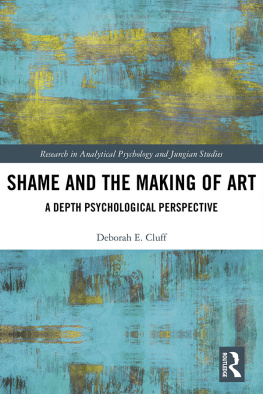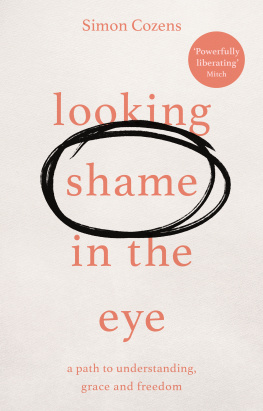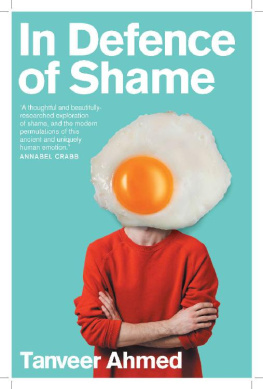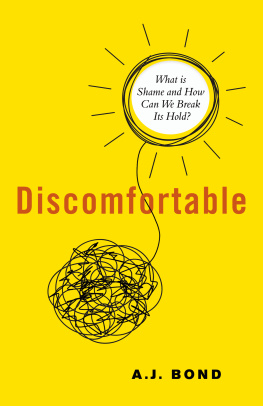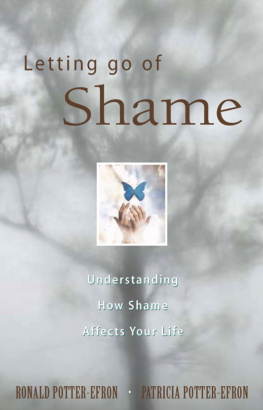Table of Contents
Pages
Shame and the Making of Art
Shame remains at the core of much psychological distress and can eventuate as physical symptoms, yet experiential approaches to healing shame are sparse. Links between shame and art making have been felt, intuited, and examined, but have not been sufficiently documented by depth psychologists. Shame and the Making of Art addresses this lacuna by surveying depth psychological conceptions of shame, art, and the role of creativity in healing, contemporary and historical shame ideologies, as well as recent psychobiological studies on shame.
Drawing on research conducted with participants in three different countries, the book includes candid discussions of shame experiences. These experiences are accompanied by Cluffs heuristic inquiry into shame with an interpretative phenomenological analysis that focuses on how participants negotiate the relationship between shame and the making of art. Cluffs movement through archetypal dimensions, especially Dionysian, is developed and discussed throughout the book. The results of the research are further explicated in terms of comparative studies, wherein the psychological processes and impacts observed by other researchers and effects on self-conscious maladaptive emotions are described.
Shame and the Making of Art should be essential reading for academics, researchers, and postgraduate students engaged in the study of psychology and the arts. It will be of particular interest to psychologists, Jungian psychotherapists, psychiatrists, social workers, creativity researchers, and anyone interested in understanding the dynamics of this shame and self-expression.
Deborah E. Cluff completed her PhD in Depth Psychology at the Pacifica Graduate Institute, USA, in 2015.
Research in Analytical Psychology and Jungian Studies
Series Advisor: Andrew Samuels
Professor of Analytical Psychology, Essex University, UK.
For more information about this series please visit: www.routledge.com/Research-in-Analytical-Psychology-and-Jungian-Studies/book-series/JUNGIANSTUDIES.
The Research in Analytical Psychology and Jungian Studies series features research-focused volumes involving qualitative and quantitative research, historical/archival research, theoretical developments, heuristic research, grounded theory, narrative approaches, collaborative research, practitioner-led research, and self-study. The series also includes focused works by clinical practitioners, and provides new research informed by explorations of the work of C. G. Jung that will appeal to researchers, academics, and scholars alike.
Books in this series:
Symptom, Symbol, and the Other of Language
A Jungian Interpretation of the Linguistic Turn
Bret Alderman
Post-Jungian Psychology and the Short Stories of Ray Bradbury and Kurt Vonnegut
Golden Apples of the Monkey House
Steve Gronert Ellerhoff
Eros and Economy
Jung, Deleuze, Sexual Difference
Barbara Jenkins
Towards a Jungian Theory of the Ego
Karen Evers-Fahey
A Japanese Jungian Perspective on Mental Health and Culture
Wandering Madness
Iwao Akita
Translated by Waka Shibata and Kittredge Stephenson
Jung and Kierkegaard
Researching a Kindred Spirit in the Shadows
Amy Cook
Consciousness in Jung and Patajali
Leanne Whitney
Shame and the Making of Art
A Depth Psychological Perspective
Deborah E. Cluff
Shame and the Making of Art
A Depth Psychological Perspective
Deborah E. Cluff

First published 2018
by Routledge
2 Park Square, Milton Park, Abingdon, Oxon OX14 4RN
and by Routledge
711 Third Avenue, New York, NY 10017
Routledge is an imprint of the Taylor & Francis Group, an informa business
2018 Deborah E. Cluff
The right of Deborah E. Cluff to be identified as author of this work has been asserted by her in accordance with sections 77 and 78 of the Copyright, Designs and Patents Act 1988.
All rights reserved. No part of this book may be reprinted or reproduced or utilized in any form or by any electronic, mechanical, or other means, now known or hereafter invented, including photocopying and recording, or in any information storage or retrieval system, without permission in writing from the publishers.
Trademark notice: Product or corporate names may be trademarks or registered trademarks, and are used only for identification and explanation without intent to infringe.
British Library Cataloguing in Publication Data
A catalogue record for this book is available from the British Library
Library of Congress Cataloguing in Publication Data
A catalog record for this book has been requested
ISBN: 978-1-138-09660-8 (hbk)
ISBN: 978-1-315-10524-6 (ebk)
Typeset in Sabon
by Wearset Ltd, Boldon, Tyne and Wear
This work is dedicated to my family for all that has happened and all that will be. My father died while I was conducting this research. I hoped that he would live long enough to see it completed since I was doing it with the fantasy of gaining his ultimate approval. For some time his death took away my something to prove and I was left wondering what the point was, who would care? After two years of struggle to find meaning, I came back to the deeper, broader purpose: to make a difference for someone else who battles the demons of shame. The sincerest hope I have is that this confrontation with shame disrupts this generations-old tradition. To Chloe: your angel soul saved my life. I would not have the heart I do without you to love. May you know freedom and joy and let your beautiful inside out; this world needs your unique expression.
Contents
Figures
Introduction
Links between shame and the making of art have been felt, intuited, and even examined, but have not been sufficiently documented by depth psychologists, leaving us with a lack of robust research data to draw on for self-directed study or clinical application. This research represents a unique contribution to the body of understanding shame and the making of art. Through a combination of literature review and phenomenological analyses, the book examines whether the making of assemblage art can help to re-assemble the parts of self that have been lost to shame. A theoretical framework is provided to orient the reader to various definitions of shame. This framework is fleshed out by way of subjective experiments including a heuristic inquiry into shame, through encountering the archetypal Dionysus and the making of assemblage art. The primary aim of a heuristic investigation is to translate the researchers personal experiences into a story that portrays the qualities, meanings, and essences of universally unique experiences (Moustakas, 1990, p. 13). To accomplish this, the heuristic study is validated by a brief Interpretative Phenomenological Analysis (IPA), consisting of a participant-based assemblage art workshop. The IPA focused on how the relationship between shame and art making is negotiated in a group setting. The participant population included a diverse group of males and females from three different countries representing a range of ages between 20 and 56. Jungian Erich Neumann writes that though individual wounds reside in the personal unconscious, they resonate throughout the collective unconscious, implicating the resolution of ones complexes in communal transformation (1959/1966, p. 157).

